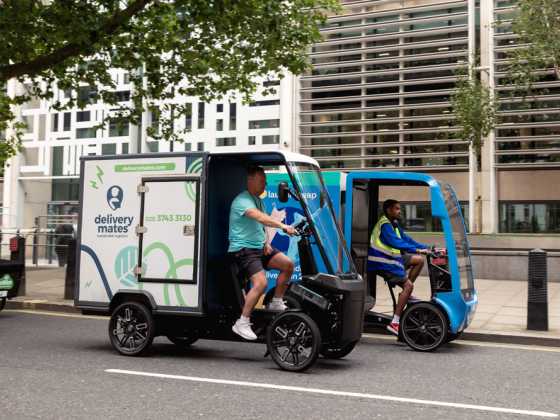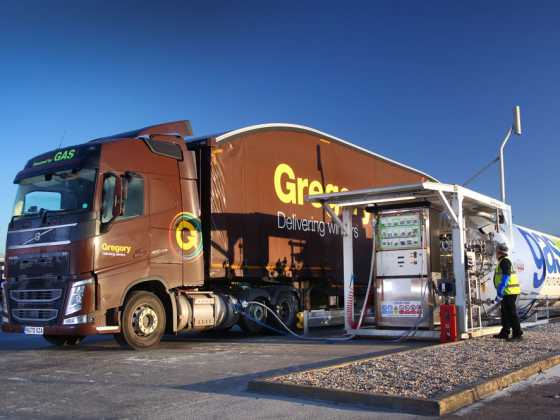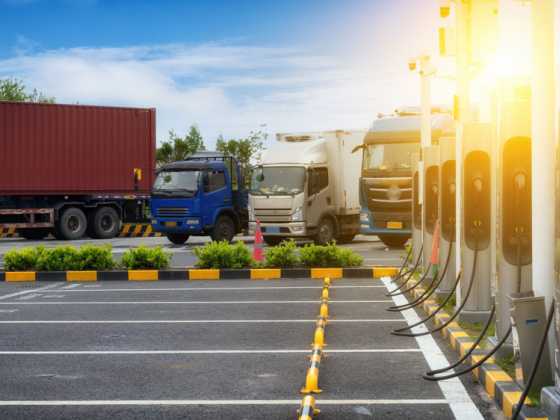Capping capital emissions
An initiative from delivery firm Hermes to reduce the carbon impact of last mile deliveries in the capital has been praised by the Major of London, Boris Johnson for helping improve air quality. GreenFleet talks to Eoin Kenneally, e-commerce manager of myHermes, to find out more
 Hermes is a delivery specialist handling more than 200 million parcels each year. Within the UK, Hermes operates a network of over 10,000 lifestyle couriers and over 5,000 ParcelShops.
Hermes is a delivery specialist handling more than 200 million parcels each year. Within the UK, Hermes operates a network of over 10,000 lifestyle couriers and over 5,000 ParcelShops.
Hermes works with a wide range of leading high street, catalogue and online retailers in the UK including Next Directory, ASOS, Tesco, John Lewis, Debenhams and Arcadia Group.
The myHermes website was launched in 2009 in response to increased demand for a flexible delivery solution. It offers a two day ParcelShop service; a three-day courier service; and a 24/7 Parcel Locker service.
Hermes UK is owned by the German group Hermes Logistik Gruppe Deutschland (HLGD) who is the largest independent home delivery specialist for business-to-consumer and consumer-to-consumer sectors in Germany. This company is owned by the Otto Group.
All companies belonging to the Otto Group have been set a target of 50 per cent reduction in CO2 emissions by 2020. This is measured in the CO2 emitted per item delivered.
Describe the company’s fleet: types of vehicles, how many and in what capacity are they used?
Hermes has a trunking fleet made up of 160 tractor units and 760 trailers used largely for collections from customers and outbound deliveries to its depots.
The company also has a rigid vehicle fleet of 400, largely 12t and 7.5t vehicles, used to deliver parcels from depots to sub-depots and couriers’ houses.
What’s the company’s strategy for reducing CO2 emissions from its transport?
As retailers undertake new measures to become more energy efficient and to reduce waste, Hermes believes that carriers also have a major responsibility to become more sustainable, especially when you consider the extensive transport networks that are in constant operation.
Hermes strives to seek efficiencies within its day-to-day operations whilst developing its portfolio of services and solutions and sustainability is embedded in this approach. For example, Hermes recently renewed a contract with Michelin solutions after the efficient management of its tyres helped contribute to an impressive 12 per cent reduction in diesel bills over the last three years. The new contact covers the entire Hermes UK fleet of 160 tractor units, 400 rigid trucks and 760 trailers.
The tyre policy, in conjunction with Hermes’ other investments in more fuel‑efficient trucks and aerodynamic trailers, has helped to optimise the operation of its fleet. This has led to a double-digit fuel saving over the last three years, saving nearly 1,000,000 litres of diesel fuel.
Explain what you are doing to improve air quality in cities?
Last year Hermes embarked on a project to streamline the fulfilment of deliveries in London whilst having a positive effect upon the environment. Following a three-month tender process, Hermes entered a partnership with Gnewt Cargo, utilising a 44-strong fleet of 100 per cent electric, zero-emission vehicles which allows the company to make carbon and nitrogen emission savings of 100 per cent for ‘last mile delivery’ within the city. As a result, Hermes expects to save approximately 146 tonnes of carbon a year.
Previously Hermes was working with two suppliers to fulfil deliveries within central London and their depots were located on the outskirts of the city. Therefore couriers delivering the parcels had to travel from the depots and into central London before starting their rounds. Gnewt Cargo was an especially attractive proposition for Hermes as its hub is based in London Bridge. This reduced the number of miles Hermes would have to travel to fulfil deliveries each year, from 330,000 miles to 65,000 miles.
How are electric vehicles suitable for this type of operation?
As a result of this partnership Hermes deliveries in London are now being carried out by Renault Kangoo Z.E. vehicles. These vans are powered by sustainably sourced electricity and they do not contribute to the pollution caused by traditional power stations.
Electric vehicles are particularly suited to urban deliveries due to the short and pre‑planned distances travelled. What’s more, the vehicles, which are smaller than their predecessors, also reduce the parking space they take up by 40 per cent, helping to reduce congestion on the city’s busy roads.






